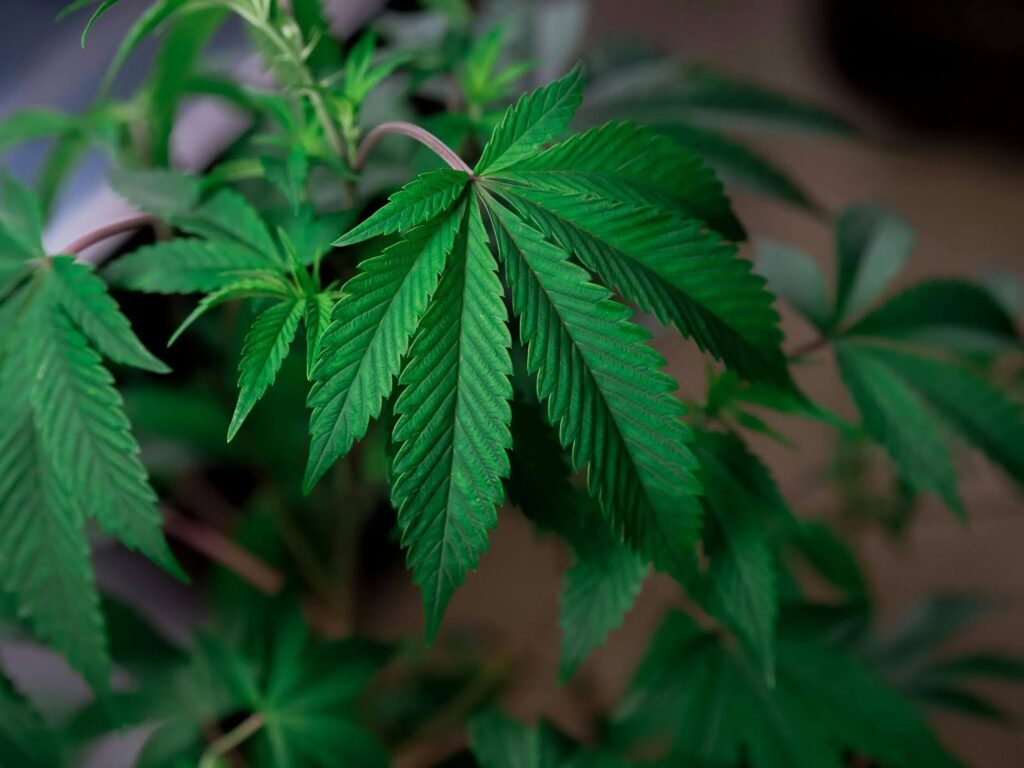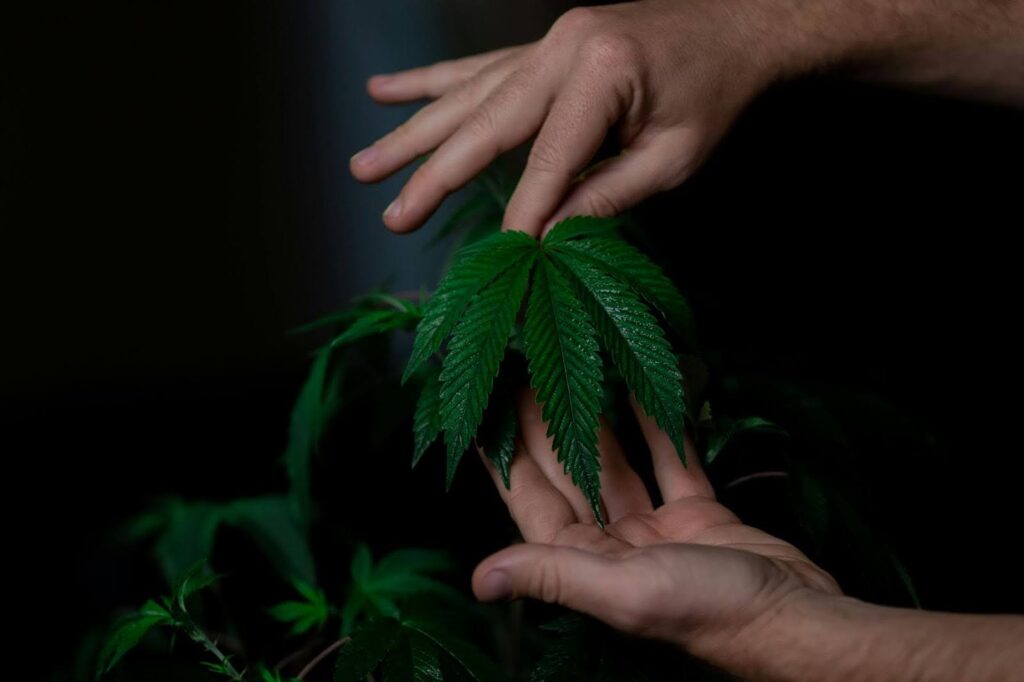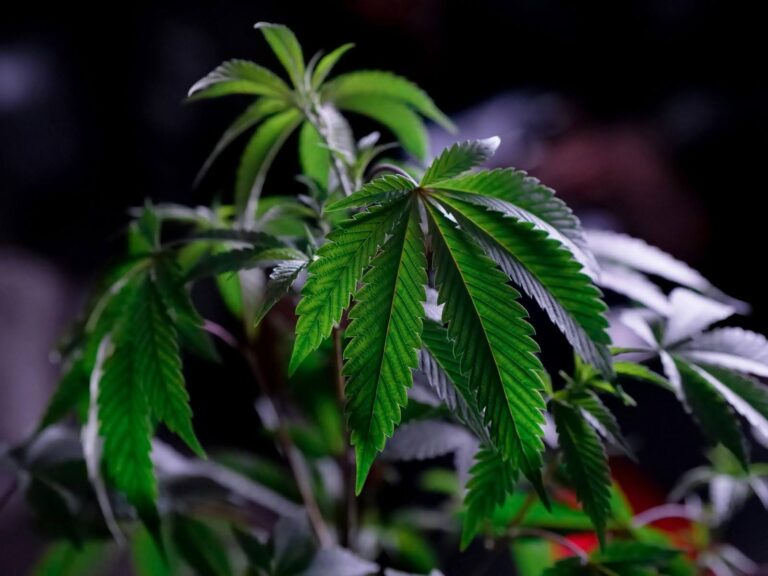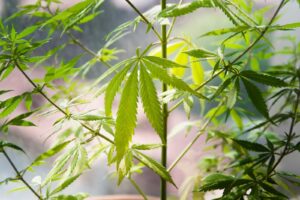Are you looking for ways to streamline your cannabis cultivation processes and ensure your operations run smoothly? The backbone of a well-organized and compliant cannabis business is standard operating procedures (SOPs). With them, maintaining consistency and quality can be easier, especially in an industry with strict and ever-changing regulations.
The cannabis industry is rapidly expanding. In 2022 alone, the global legal cannabis market was valued at more than $17.8 billion, and it is projected to grow at a compound annual growth rate of 34.03% from 2023 to 2030. With such exponential growth, the need for structure and compliance is more critical than ever. SOPs provide the basis for operational excellence while meeting stringent legal requirements.
In addition to regulatory demands, cannabis businesses face challenges such as product quality, employee training, and environmental sustainability. SOPs are critical tools for addressing these issues, ensuring consistency and efficiency in every step of the cultivation process. For businesses looking to scale, well-documented procedures make it easier to replicate success across multiple locations.
Let’s explore how cannabis cultivation SOPs can transform your operations and set you up for long-term success, helping you stay competitive in this fast-evolving market.
Understanding Cannabis Cultivation SOPs
Good cannabis cultivation requires more than expertise; it requires precision, consistency, and adherence to a structured framework. The industry’s complexity can only be navigated through standard operating procedures (SOPs), which serve as blueprints for every aspect of the cultivation process, from germination to packaging.
Let’s learn how SOPs are necessary for ensuring operational success, regulatory compliance, and product quality.

Importance of Cannabis Cultivation SOPs
The importance of cannabis cultivation SOPs can never be overstated in a highly regulated and competitive industry. The procedures set the ground for consistency, quality, and compliance for every detail to run your operation smoothly. As your business grows and regulations change, strong SOPs provide the flexibility and framework that will ensure success, protect compliance, and fuel long-term growth. Here’s how it is essential:
1. Improving Consistency and Ensuring Quality Production
Consistency is key to producing high-quality cannabis. SOPs guide employees to follow the same processes, resulting in uniform crops and satisfied customers. Standardized procedures eliminate variability, ensuring that each plant receives the same care and resources throughout its lifecycle. This uniformity leads to higher product reliability, fostering customer trust and loyalty.
2. Enhancing Regulatory Compliance and Passing Audits
Audits can be stressful, but well-maintained SOPs make them manageable. Regulators look for documented processes that align with legal requirements. SOPs provide the evidence you need to demonstrate adherence to standards. Regularly updated SOPs also ensure you remain compliant with evolving laws and industry guidelines. Additionally, they:
Simplify Complex Regulations: Breaking down intricate legal requirements into actionable steps.
Prepare for Regulatory Changes: Providing a structured framework that adapts to new laws.
Facilitate Internal Audits: Help to identify compliance gaps proactively.
Promote Transparency: Demonstrate a commitment to regulatory compliance.
Prevent Contamination Risks: Provide transparent handling, sterilization, and waste management protocols to prevent regulatory issues.
3. Supporting Effective Training Programs and Workplace Safety
Clear SOPs make training new employees easier. These documents serve as step-by-step training guides that help staff understand procedures and safety protocols. This reduces errors and creates a safer work environment. Key benefits include:
Uniform Onboarding: All new employees are trained uniformly.
Knowledge Retention: Providing reference materials for experienced staff.
Safety Standards: Outlining emergency procedures, equipment handling, and hazard prevention.
Continuous Improvement: Feedback is incorporated to keep safety protocols updated.
Team Accountability: Roles are clearly defined to foster collaboration and reduce miscommunication.
4. Improving Operational Efficiency
SOPs streamline workflows, reducing confusion and inefficiencies. Employees can focus on their tasks without hesitation, leading to better productivity. By minimizing downtime and errors, SOPs:
Optimize resource use.
Avoid misuse or overutilization of materials.
Saves costs by reducing waste and inefficiency.
5. Enabling Scalability and Expansion
As companies expand, SOPs provide a replicable framework for ensuring quality and compliance across different locations. They ensure that operations are scalable without losing standards.
6. Encouraging Continuous Improvement
Well-documented SOPs facilitate the identification of bottlenecks or inefficiencies that businesses face. They provide a baseline for current practices and, more importantly, allow for improvement, facilitating innovation and adaptability.
How to Create Cannabis Cultivation SOPs
Effective SOPs in cultivation are an essential step for smooth operation and consistency of results. Systematic creation and refinement of these procedures set your business up for scalability and long-term success. Here are the steps to create effective SOPs:
Steps to Developing Good SOPs
Outline Processes: Document each activity in your growing process, breaking them into smaller, manageable steps.
With PlanaCan, you can outline the processes of your cannabis yield in real-time. Document each step, capture key decisions, and refine your process for higher yields and greater profits.
Incorporate Employees: Incorporate employees to identify real-life problems and improve the procedures.
Utilize Technology: Utilize digital tools for storage, accessibility, and real-time updates.
Develop SOPs to Grow: Develop SOPs that can grow with new regulations, technologies, or facility expansions.
Charts and Diagrams: Use charts, diagrams, and flowcharts to make complex processes more straightforward to understand.
Review schedules for SOPs: Review and update SOPs based on the latest best practices.
Emergency planning: Prepare SOPs for pest infestation, equipment failure, and non-compliance.
Training of staff: Organize workshops to ensure that employees are aware of and follow the SOPs.
Do you find it challenging to keep your team aligned while maximizing yields? PlanaCan helps you increase productivity by centralizing all tasks and communication. The tool ensures everyone stays on track, even when on the go. With mobile apps for Android and iOS, you can update, view, and complete tasks from your devices. Adding task-specific notes helps crop production. It reduces misunderstandings, saves time, and aligns the team.
Now, let us discuss the components of effective cultivation SOPs for cannabis.
Components of Effective Cultivation SOPs
Developing effective cannabis cultivation SOPs involves the close consideration of all aspects of a growing process. Below, we outline the essential components every cultivation SOP must cover:
1. Medium Specifications, Substrate Details, and Lighting Schedules
- Specify the materials and schedules to be used for proper plant growth, such as soil types, nutrient mixes, and light cycles.
- Include the guidelines to ensure that the plants are being treated consistently.
2. Environmental Conditions and Plant Care Procedures
- Record temperature, humidity, and ventilation requirements
- Instructions on pruning, training, and maintaining the health of the plants
- Pest prevention and disease control methods
3. Feeding Instructions, Pest Prevention, and Waste Management Protocols
- Provide specific feeding schedules and nutrient requirements.
- Describe pest control methods and organic or chemical control measures.
- Provide environmentally friendly waste management practices to avoid harming ecosystems.
4. Water Management Practices
- Identify irrigation schedules and water quality standards.
- Describe water recycling and conservation techniques for sustainable operations.
5. Harvesting Protocols
- Describe the proper timing and techniques for harvesting to ensure that potency and quality are maintained in plants.
- Include guidelines for drying, curing, and trimming processes.
6. Equipment Maintenance and Calibration
- Schedule routine maintenance of cultivation equipment lights and HVAC systems.
- Develop calibration procedures that ensure the accuracy of controls to the environment and nutrient supply
7. Cleaning and Sanitation Operations
- Maintenance record cleaning schedules, sanitation methods used in the grow rooms and their associated equipment
- Highlight best practices for preventing cross-contamination and having a pest-free environment.
8. Security
- Implementation of monitoring and controlling procedures for access to cultivation rooms and tracking inventory
- Must be compliant with legal requirements related to security to prevent unapproved activities
9. Record Compliance
- Set procedures for maintaining accurate cultivation activity records.
- Ensure documentation is prepared for audits and regulatory inspections.
10. Emergency Response SOPs
- Create detailed action plans in case of emergencies such as pest outbreaks, equipment failures, or compliance violations.
- Provide clear instructions to ensure that disruptions to operations are minimal.
By incorporating these aspects into your cannabis cultivation SOPs, you can ensure that all aspects of your operation are consistent, compliant, and efficient.
Writing Clear and Accurate SOPs
Clarity, relevance, and accessibility are the primary focus areas for effective SOP creation. A well-written SOP should make it possible for employees to understand and follow procedures without confusion. The elements are as follows:
1. Using Simple Language and Avoiding Jargon
Use straightforward language to make SOPs easy for employees at all levels to understand. Avoid technical jargon that could confuse or alienate team members. Simplified instructions increase compliance and reduce execution errors.
2. Keeping It Real-Time Relevant and Accurate
Update SOPs regularly to align with the latest industry practices and regulatory requirements. Outdated procedures can lead to confusion and non-compliance, so establish a schedule for periodic reviews. Develop introduction to new technologies or process enhancements in a timely manner so that SOPs always stay relevant.
3. Defined Roles and Responsibilities
Clarify who is responsible for completing the task or step within an SOP. Role-specific information negates confusion and facilitates liability. Provide a contact number or escalation point to request troubleshooting or further instruction support.
4. Adding Visual Elements
Use diagrams, flowcharts, and images to make complex steps understandable clearly.
Visually enhanced information allows comprehension and reduces the probability of misinterpretation.
5. Facilitating Accessibility
Store SOPs in both digital and physical formats to ensure employees can easily access them. For convenience, use platforms that allow real-time updates and mobile accessibility.
6. Incorporating Feedback Loops
Gather feedback from employees who use the SOPs to identify gaps or unclear instructions. Use this feedback to refine and improve the SOPs regularly.
7. Structuring SOPs Consistently
Use a standard format across all SOPs, including sections like purpose, scope, materials needed, and step-by-step procedures. Consistency in structure makes SOPs easier to navigate and follow.
8. Using Checklists for Simplicity
Convert complex tasks into checklist-style SOPs where possible. Checklists ensure all steps are followed and reduce the risk of missing critical details.
9. Emphasizing Key Points
Highlight critical steps or safety measures using bold or coloured text. Clearly state potential risks or errors associated with specific tasks to prevent mistakes.
Now, let us learn the types of cannabis cultivation SOPs.

Types of Cannabis Cultivation SOPs
The creation of different types of SOPs, which are specific to certain tasks and processes, is essential in ensuring clarity and efficiency in operations. Each type has its own purpose, which varies according to the level of complexity and detail needed by specific processes. Aligning the format with the demands of the task will make the business more usable and practical. Below are the main types:
1. Checklist Style for Simple Tasks
- Best suited for simple, routine tasks like setting up equipment, cleaning protocols, or daily maintenance.
- Less likely to miss steps by providing an easy-to-follow format.
- Guarantees consistency and attention to detail for routine activities.
2. Step-by-Step Style for Detailed Instructions
- Ideal for complex procedures such as cloning, nutrient mixing, or equipment calibration.
- Provides step-by-step guidance to guarantee accuracy and avoid mistakes.
- Employees can refer to this format for high-stakes or intricate processes.
3. Hierarchical Style for Complex Procedures
- Groups tasks into categories and subcategories so multi-level decision-making is easy to understand.
- Ideal for broad workflows that span multiple stages or departments.
- Makes it easier to understand and implement complex procedures.
4. Flowchart Style for Visual Clarity
- Visualizes the steps, which are great for troubleshooting or multi-path procedures.
- Promotes better understanding, especially for people who like graphic instructions.
- Applicable for procedures with conditional decisions or alternative paths.
5. Combination Style for Flexibility
- Merges multiple formats, such as checklists and step-by-step instructions, for flexibility.
- Suits processes that have easy steps and complex decisions combined.
6. Digital SOPs for Interactive Guidance
- Videos, links, and annotations will be included to make user-friendly, interactive procedures.
- Helps to make it easier to access and engage with, especially for tech-savvy
7. Template-Based SOPs for Consistency
- Standardized templates ensure uniformity in all the SOPs.
- Makes it easy to create and ensures the inclusion of all critical elements.
8. Conditional or Scenario-Based SOPs
- This section details alternative courses of action based on a particular condition, such as a pest infestation or equipment failure.
- Positions the team to respond to unknown scenarios with confidence and quick action.
9. Role-Specific SOPs
- Specific SOPs for specific roles and departments to ensure relevance
- Helps reduce training information and overload for employees
10. Task Frequency SOPs
Divide SOPs into their task frequency, such as daily, weekly, or seasonable.
Helps prioritize one’s responsibilities and ensures nothing gets missed.
Are you struggling to keep up with your cannabis growth requirements? PlanaCan‘s interactive calendar helps you plan your cannabis yield for months ahead while efficiently managing daily tasks. Adjust schedules as needed and keep all cultivation information in one place, ensuring no task is missed.
Now that you know much about SOPs let us learn about reviewing and improving SOPs for your cannabis.
Reviewing and Improving SOPs
Regularly revisiting and refining SOPs ensures they stay adequate and relevant. Here’s how you can streamline the process:
1. Conduct Regular Reviews and Updates
- Set periodic review schedules to ensure SOPs reflect the latest practices and regulations.
- Replace outdated methods with innovative solutions for enhanced efficiency.
2. Include Checkpoints and Gather Expert Feedback
- Add checkpoints to monitor adherence and evaluate performance.
- Seek input from employees and industry experts to identify and fill gaps in procedures.
3. Ensure Accessibility and Clarity
- Store SOPs in user-friendly formats, both digital and physical.
- Use simple language and clear formatting for easier comprehension.
- Leverage digital platforms for real-time updates and broad access.
4. Monitor Key Performance Indicators (KPIs)
- Track metrics like time efficiency, compliance rates, and error reduction.
- Use these insights to assess SOP effectiveness and guide improvements.
5. Involve Employees in the Review Process
- Engage staff who use SOPs daily for practical feedback.
- Use their insights to refine unclear instructions and streamline processes.
6. Leverage Technology
- Employ software tools to track SOP adherence and identify deviations.
- Use version control to manage updates and maintain an audit trail.
7. Benchmark Against Industry Standards
- Compare your SOPs to industry best practices for competitiveness.
- Integrate cutting-edge techniques to enhance operations.
8. Create a Feedback Mechanism
- Develop a simple system for employees to suggest changes or report issues.
- Continuous feedback ensures SOPs stay relevant and user-friendly.
9. Test Updates Before Implementation
- Pilot new or revised SOPs with a small group to evaluate feasibility.
- Use pilot feedback to refine processes before full-scale rollout.
10. Provide Training for Updates
- Train staff on changes to SOPs through workshops or tutorials.
- Use sessions to clarify updates and answer questions.
11. Incorporate Risk Assessments
- Regularly review SOPs to identify potential risks or vulnerabilities.
- Implement safety measures to mitigate identified risks.
Conclusion
SOPs are the foundation of a successful cannabis cultivation operation. They ensure consistency, regulatory compliance, and efficiency at every stage, from planting to harvest. However, to truly maximize their potential, SOPs need the right tools and strategies for implementation and management.
PlanaCan makes cultivation management for cannabis farmers easier to handle. It allows farmers to define and automate procedures for every step in the crop cycle, from planting to harvesting, using customizable templates. Using an interactive calendar, any task can be quickly scheduled into a clear timeline for long-term planning and daily management. Centralized information and dynamic task adjustment ensure consistency, efficiency, and no missed steps in the cultivation process.
Structured SOPs, combined with innovative PlanaCan features, improve cannabis growers’ operational efficiency, increase yields, and make crop management more manageable and more precise.
Take your cultivation of cannabis to the next level with PlanaCan.
Schedule a free call today, and let’s see how PlanaCan can revolutionize your growth operations.




